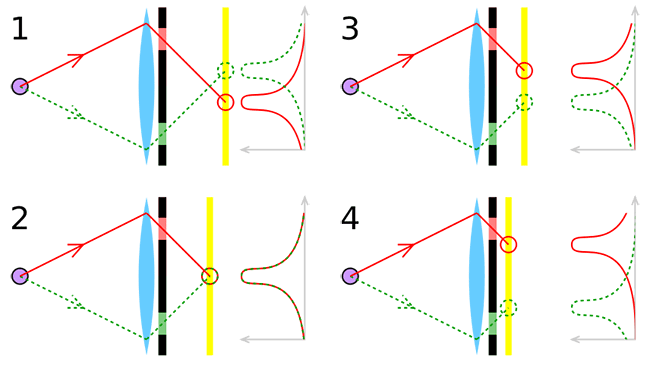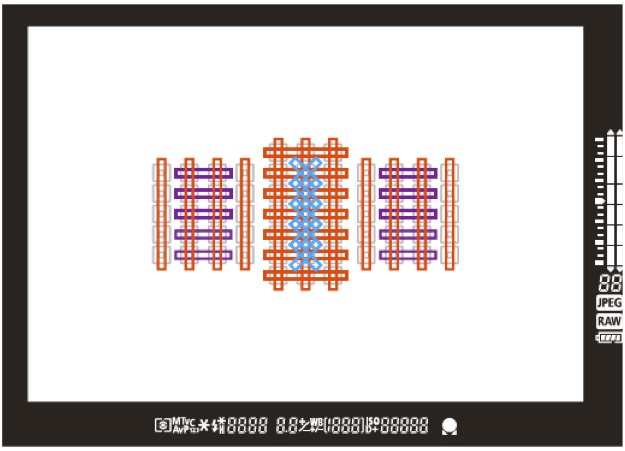How Phase Detection Autofocus Worksعندما يتعلق الأمر بتقنية DSLR، يبدو أن هناك قدرًا كبيرًا من الالتباس حول كيفية عمل التركيز التلقائي للكشف عن الطور. في حين أن هذا قد لا يكون موضوعًا ذا أهمية كبيرة بالنسبة لمعظم الأشخاص، إذا كنت تتساءل كيف ولماذا يمكن أن تواجه الكاميرا مشكلة التركيز التلقائي، فسوف تلقي هذه المقالة بعض الضوء على ما يحدث داخل الكاميرا فيما يتعلق بالتركيز التلقائي عند التقاط الصورة. . هناك قدر هائل من ردود الفعل السلبية حول مشكلات التركيز التلقائي على أدوات جيدة مثل Canon 5D Mark III وNikon D800 وPentax K-5 وغيرها من كاميرات SLR الرقمية، ويبدو أن معظم المصورين لا يفهمون المشكلة الأساسية. لا يتعلق الأمر بالضرورة بطراز أو نوع معين من الكاميرا، بل بالطريقة المحددة التي تكتسب بها هذه الكاميرات التركيز. إذا بحثت على الإنترنت، فستجد الآلاف من تقارير التركيز التلقائي على جميع أنواع كاميرات DSLR التي يعود تاريخها إلى أكثر من 10 سنوات. ومن ثم، فإن مشكلات التركيز الأمامي والتركيز الخلفي التي نراها في الكاميرات الحديثة ليست شيئًا جديدًا – فقد كانت موجودة منذ إنشاء أول كاميرا DSLR مزودة بمستشعر اكتشاف الطور.
When it comes to DSLR technology, there seems to be quite a bit of confusion on how exactly phase detection autofocus works. While for most people this might not be a topic of great interest, if you are wondering how and why a camera could have an autofocus problem, this article will shed some light on what happens inside the camera in terms of autofocus when a picture is taken. There is an overwhelming amount of negative feedback on autofocus issues on such fine tools as the Canon 5D Mark III, Nikon D800, Pentax K-5, and other digital SLR cameras and it seems like most photographers do not seem to understand that the underlying problem is not necessarily with a specific model or type of a camera, but rather with the specific way these cameras acquire focus. If you search on the Internet, you will find thousands of autofocus reports on all kinds of DSLRs dating back 10+ years. Hence, the front focus and back focus issues we see in modern cameras are not anything new – they have been there ever since the first DSLR with a phase-detect sensor was created.
لفهم هذه المشكلة بمزيد من التفصيل، من المهم أن تتعرف أولاً على كيفية عمل كاميرا DSLR. تُظهر الرسوم التوضيحية النموذجية لكاميرات DSLR مرآة انعكاسية واحدة موضوعة بزاوية 45 درجة فقط. ما لم يظهروه هو أن هناك مرآة ثانوية خلف المرآة المنعكسة تعكس جزءًا من الضوء إلى مستشعر كشف الطور. ألقِ نظرة على الرسم التوضيحي المبسط أدناه الذي قمت بإنشائه من نموذج لصورة Nikon D800:

How DSLR Cameras Work
To understand this issue in more detail, it is important to get to know how a DSLR camera works first. The typical DSLR illustrations only show a single reflex mirror positioned at a 45-degree angle. What they don’t show, is that there is a secondary mirror behind the reflex mirror that reflects a portion of light into a phase-detect sensor. Take a look at the simplified illustration below that I made from a sample Nikon D800 image:

شعاع الضوء مرآة رئيسية/مرآة منعكسة مرآة ثانوية، تُعرف أيضًا باسم “المرآة الفرعية” مصراع الكاميرا ومستشعر الصورةدبوس غريب الأطوار (سداسي 1.5 مم) لضبط دبوس غريب الأطوار للمرآة الرئيسية (سداسي 1.5 مم) لضبط مستشعر اكتشاف طور المرآة الثانوية (مستشعر AF) محدد المناظر الخماسي
دعونا نلقي نظرة على ما يحدث داخل الكاميرا عند التقاط الصورة. تدخل أشعة الضوء إلى العدسة (1) وتصل إلى الكاميرا. تم وضع مرآة رئيسية شفافة جزئيًا (2) بزاوية 45 درجة، لذا فهي تعكس معظم الضوء عموديًا إلى المنشور الخماسي (8). يقوم المنشور الخماسي بتحويل الضوء العمودي بطريقة سحرية إلى ضوء أفقي وإعادته، بحيث ترى بالضبط ما تحصل عليه عندما تنظر من خلال عدسة الكاميرا (9). يمر جزء صغير من الضوء عبر المرآة الرئيسية وينعكس بواسطة المرآة الثانوية (3) التي تميل أيضًا بزاوية (54 درجة في العديد من كاميرات نيكون الحديثة، كما هو موضح أعلاه). بعد ذلك، يصل الضوء إلى مستشعر الطور / مستشعر التركيز البؤري التلقائي (7)، الذي يعيد توجيهه إلى مجموعة من المستشعرات (مستشعران لكل نقطة تركيز بؤري تلقائي). تقوم الكاميرا بعد ذلك بتحليل الصور من هذه المستشعرات ومقارنتها (على غرار كيفية تقييم التركيز البؤري على محدد المدى) وإذا لم تبدو متطابقة، فإنها توجه العدسة لإجراء التعديلات المناسبة (انظر أدناه للحصول على مزيد من التفاصيل).
Here is the description of each number shown in the above illustration:
- Ray of light
- Main/Reflex Mirror
- Secondary Mirror, also known as “Sub-Mirror”
- Camera Shutter and Image Sensor
- Eccentric pin (1.5mm hex) for adjusting the Main Mirror
- Eccentric pin (1.5mm hex) for adjusting the Secondary Mirror
- Phase Detect Sensor (AF Sensor)
- Pentaprism
- Viewfinder
Let’s take a look at what happens inside the camera when a picture is taken. Light rays enter the lens (1) and make it into the camera. A partially transparent main mirror (2) is positioned at a 45-degree angle, so it reflects most of the light vertically into the pentaprism (8). The pentaprism magically converts the vertical light back into horizontal and reverts it, so that you see exactly what you get when you look through the viewfinder (9). A small portion of light goes through the main mirror and gets reflected by the secondary mirror (3) that is also tilted at an angle (54 degrees on many modern Nikon cameras, as illustrated above). Next, the light reaches the Phase Detect / AF Sensor (7), which redirects it to a group of sensors (two sensors per AF point). The camera then analyzes and compares images from these sensors (similar to how focus is evaluated on a rangefinder) and if they do not look identical, it instructs the lens to make proper adjustments (see below for more details).
While the above process looks more or less straightforward, there is one major problem with this approach. The Phase Detect sensor is the one that instructs the lens to make proper adjustments, while the image is captured by a completely different device – the sensor on the back of the camera. Why is this a problem? Remember, when you take a picture, both the main and the secondary mirrors flip up, the shutter is opened and the light from the lens directly hits the camera sensor (4). For phase detection autofocus to work correctly, the distance between the lens mount and the camera sensor, as well as the distance between the lens mount and the Phase Detect sensor must be identical. If there is even a slight deviation, autofocus will be incorrect. On top of this, if the angle of the secondary mirror is not precisely what it should be, it will also result in autofocus issues.



